DOCK Science Driven Materials
ALD Precursors
Driving ALD to the next level – DOCK precursor solutions
In recent years ALD processes have gained tremendous interest. The number of material systems is constantly growing, hence the need for new precursors or molecules with enhanced deposition profiles. As a science-driven company we are passionate about ALD precursor development from fab to lab. With our experienced R&D team we see any new precursor development as a challenge to be mastered. Get in touch with us – we make your ALD project happen.
Examples of our range: TMAl, Mo(CO)6, W(CO)6, DiPSe, DTBSi, DADI, H2O, TESn, TMGa, PDMATa, TEMAZr, TDMAHf, TiCl4, TDMATi
01.
Integrated Circuits – Logic Applications and Memory Chips
1.1. High Aspect Ratio Metal Interconnects and Contact (Plug) Layer
Al interconnects have been used for a long time. However, the ongoing downscaling demands lower resistive interconnects to reduce RC delay. Nowadays mostly Cu interconnects are chosen. For GaAs-based microelectronic devices Au is chosen as interconnect material.
The plug connects the Si with the metal interconnects. Since the plugs are short material properties such as chemical and thermal stability are more important than resistivity. W has been the material of choice due to a relatively low resistivity, high melting point, and strong inert nature. Supplying B2H6 enhances the nucleation of W, which helps while shrinking down devices.
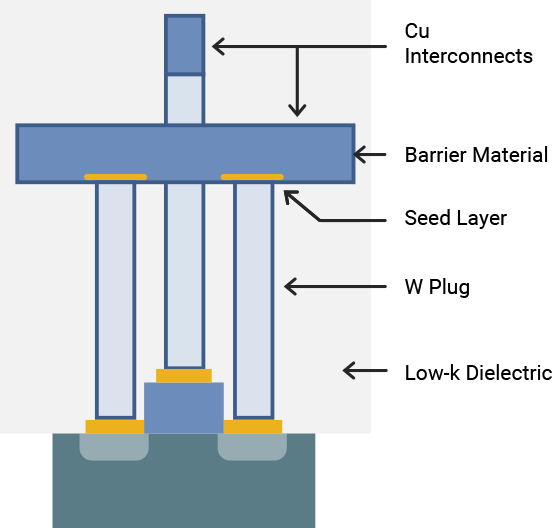
1.2. Seed Layer
Alternatives are required for Cu seed layers as the down shrinking of devices continues. The nucleation of Cu by an island-type fashion is observed upon ALD deposition, leading to a noncontinuous film with increased resistivity. The recent investigation focuses on noble materials such as Ru, Pt, and Ir.
Examples of our range: Ru(EtCp)2
1.3. Low-κ Dielectrics
Maintaining high-speed performances while downscaling of electronic devices is a challenging task due to limiting factors, such as RC delay and power consumption. Therefore, low-κ dielectrics are employed as contacts to reduce parasitic capacitance.
1.4. Barrier Material
Transition-metal nitrides such as TiN, TaN, and WN are required as barrier materials for metal interconnects in today’s microelectronics. For example, diffusion of Cu into Si results in deep-level traps that would degrade the properties of the device. Moreover, the barrier material seals the interconnects from contamination. In the early stages where Al interconnects dominated, TiN was employed for a long time. However, for Cu interconnects alternatives such as TaN and WN are required.
1.5. High-κ Dielectrics
The ongoing downscaling in today’s microelectronics demands alternatives to SiO2 with higher κ. High-κ materials allow thicker gate dielectrics to keep low tunnel currents in metal-oxide-semiconductor field-effect transistors (MOSFET). Scaling down dynamic random access memory (DRAM) results in a reduced capacitance of the capacitor component. Hence, high-κ materials are required to ensure sufficient capacitance.
HfO2 with a dielectric constant of 25 has been employed widely. Another example would be TiO2 with a dielectric constant of 80.

1.6. Capacitor Electrode
The electrode connecting the capacitor in a DRAM cell requires low resistivity and simple etching effort. The common choice is TiN while Ru and Nb are investigated as an alternative.
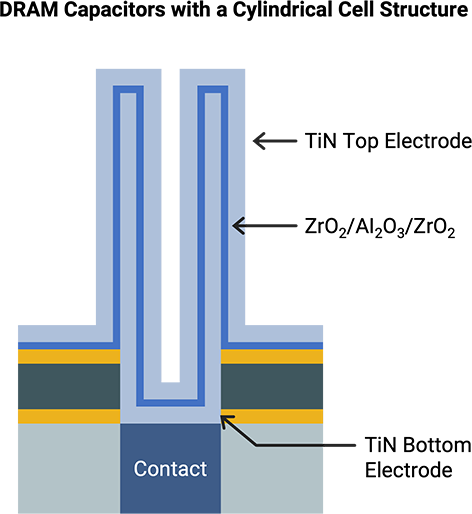
1.7. Phase Change Material
Phase-change RAM (PRAM) is a promising non-volatile memory device. It shows a high read/write speed, good scalability, and low power consumption. As phase change material Ge2Sb2Te5 may be chosen
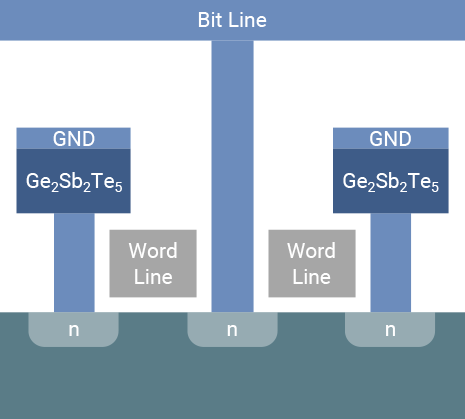
02.
Coatings – Battery Materials and Perovskite Solar Cells
The self-limiting nature of the process allows high conformal and dense coatings on arbitrary complex substrates or structures, which makes ALD the method of choice for coating of battery materials and perovskite solar cells.
Perovskite solar cells are very promising, however, several challenges such as interfacial charge recombination, ion migration, material diffusion, and susceptibility to humidity, must be overcome to achieve industrial application. Recent research relies on the ALD of suitable barriers and functional layers. Due to the possible low growth temperature and high dense conformal films, ALD is the most suitable choice for this kind of sensitive materials.
In our modern society, small portable electronic devices are omnipresent. All those devices are powered by Li-ion batteries that suffer from degradation due to Li-ion consumption at the solid electrolyte interface and the cathode material’s dissolution. A possible way to slow degradation is coating the cathode with Al2O3, which reduces the dissolution.
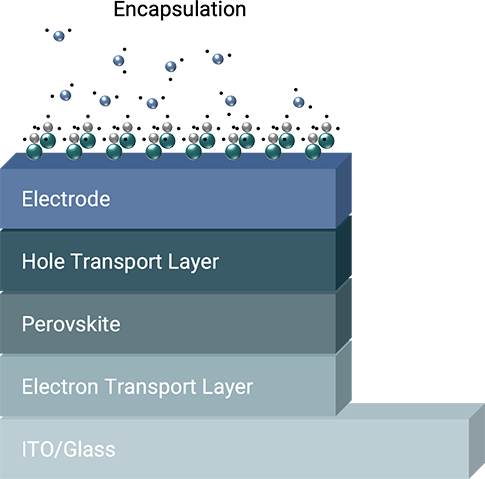
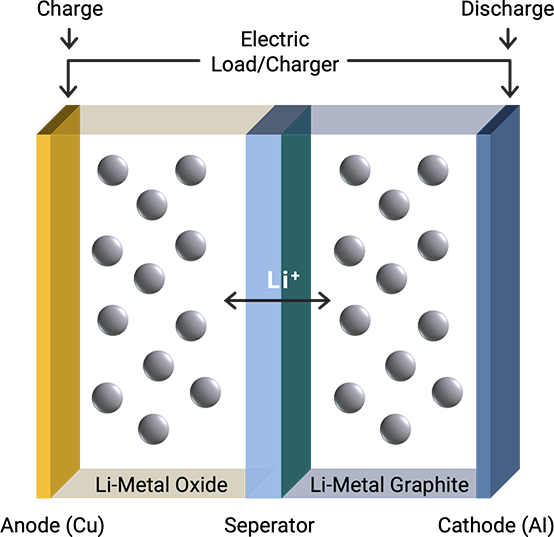
03.
Transparent Conductive Oxides
Materials that are both, transparent and conductive, are essential in today’s microelectronics. Mainly crystalline oxides are used for this purpose and conductivity is achieved by choosing the appropriate dopant. Common examples are Al-doped ZnO, F doped InO (FTO) and Sn doped InO (ITO). Applications are manifold, for example as electrodes in photovoltaics, (touch)displays, and organic LEDs.
In capacitive touchscreens an insulation glass is coated from both sides with ITO. Touching the surface of the cover glass with a finger, capacitive stylus, or conductive gloves causes an electrical charge that is resolved in the x and y positions.
